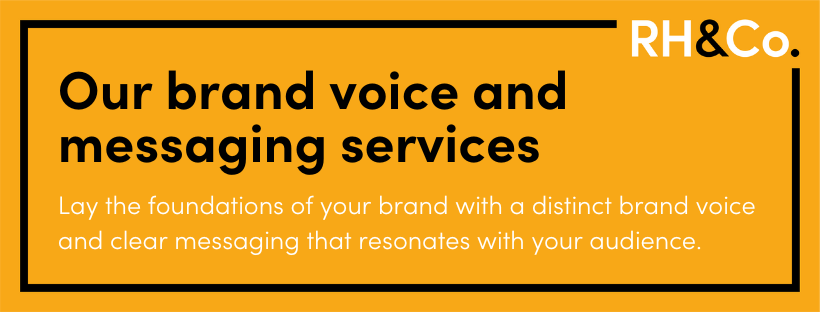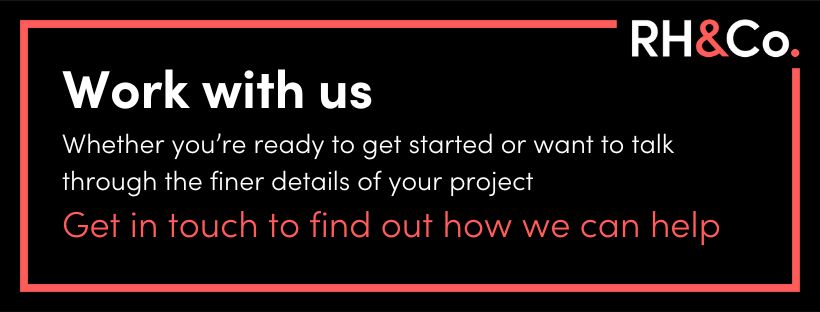

Why should I care? 5 complex companies with a crystal clear brand message
Messaging is a tough nut to crack at the best of times, let alone when it’s difficult to explain what your business actually does. Our #WriterInResidence, Sam Whitlock, looks at five brands that waded into these muddy waters and made them clear as glass.
When it comes to clarifying your company’s message, it’s easy to misunderstand the problem. You don’t have to explain what your company or product does, necessarily. You do need to show your audience why they should care.
Some businesses are lucky. The market is known enough, their brand is simple or established enough that they can boil everything down to “Buy vintage clothes online,” and proceed to show you images of Christmas jumpers. Or they can simply say “All your admin sorted,” or “Get this and get it cheap,” and even at glance their target audience might be interested.
But if your organisation does more complex or niche work, you’re competing not only against a potential lack of interest but a lack of understanding too. Your branding can quickly fall into one of two traps: 1) Your message gets muddied by explanation. Or 2) Your message becomes generic and doesn’t truly tap into your actual brand offering.
To capture your audience, you need a crystal clear message that goes to the heart of what your audience cares about. Here’s five businesses that pull it off…
Telerick.com – “Modern UI made easy”
You and I might not know anything about JavaScript. But we can probably appreciate that developing a user interface is not generally not easy. If anyone is making it simple, that’s going to be a selling point. Telerick’s website is quick to fill in the gaps for more discerning browsers:
“Build feature-rich experiences for Web, Mobile and Desktop faster than ever.”
“Stop sweating over UI and focus on the parts of the application where you can truly make a difference.”
What jumps out at you here? Phrases like “Feature-rich,” “faster than ever,” and “stop sweating” are getting straight to the core of what developers care about: time, energy and the free rein to invent. And you don’t have to speak code languages to appreciate the value here. So if someone in a design department stumbles across Telerick, they’ll be able to recommend it to their more technical counterparts.
One of the key tricks Telerick is deploying here is to skip explanations and start making promises. They don’t waste their breath telling you how they’re going to do it (until you read on); they’re getting straight to “Here’s why you should care.”

Slack – “Slack replaces email in your company”
Okay, so this strapline is dated because everyone (basically) knows what Slack is now. They’ve become so established that they don’t have to define themselves anymore. And their new homepage introduces Slack as “your new HQ” instead.
But there was a time when Slack was a skinnier, scrappier fighter trying to get its name out there. It had to define its place in the market while simultaneously ensuring businesses saw its essentiality. If it had settled on, “Slack: Your business’s messaging service,” it would have missed its simplest and central selling point:
Nobody likes email.
If Slack focused on telling you its many functions and time-saving, ease-of-use benefits, it would sound like just another business add-on. But an alternative to email… that’s worth having, surely. For sanity’s sake alone.
The beauty of clear messaging is that it makes conceptual, technical or nuanced ideas very simple to grasp. Slack doesn’t seem like a complicated tool to explain now – but that’s only because their branding team first did their homework. And speaking of this phenomenon…
Apple iPod – “1,000 songs in your pocket”
The iPod worked magic in the mp3 market because their message was clearer than their competitors. While everyone else was trying to communicate that they had a digital walkman device thing, Apple were singing a simpler tune.
The phrase resonated with people so effectively because it spoke directly to their experience. This was a new device, potentially complicated, possibly unwieldy. For many, the idea of popping a CD into a player was much simpler than fussing around with internet downloads and limited storage. But Jobs’ team found a way to make iPod sound limitless and streamlined. Carrying around CDs suddenly seemed cumbersome compared to such a simple idea.
It’s interesting that the words you traditionally associate with tech: digital, future, software, power, innovation, were scrapped in favour of everyday language. While Google’s algorithms will require us to use the keywords associated with our industry (at least for the foreseeable future), we have to be careful we’re not letting that become an obstacle to our message.

UiPath – “We make robots so people don’t have to be robots”
Artificial intelligence, robotic process automation, machine learning algorithms…. can’t we just call them all robots and be done with it? There’s something very refreshing about the way UiPath uses language that could have been understood in 1975.
While many of the AI and automation companies use grand statements to elevate themselves as harbingers of the future, UiPath scales it back. Their message doesn’t meander through the technical hocus pocus but drives straight to the human benefit: your people will be free to use their time, energy and human intelligence more creatively.
There’s a time and a place for grand statements like: unlock the future, power your dreams, achieve the impossible. But they can sometimes be a little bit vague. As if they came out of a slogan generator. UiPath on the other hand, drives home a specific message that makes artificial intelligence seem warmer and more inviting. Almost human.
SEGA – “SEGA do what Ninendon’t” (and more offensive examples!)
A new generation of video game consoles has been released but their messaging can’t quite match the sassy, cheeky, crass tactics of early 90s SEGA.
At the time Nintendo had monopolised the video game market and even though SEGA were coming onto the scene with a more powerful console, it would be tough to get noticed in the 8-bit world that Mario had come to rule.
SEGA could have pushed their 16bit technology, which gave games greater detail and colour. Or they could have tried to imitate Nintendo’s campaigns that emphasised power. But instead of explaining the console’s capabilities, they made their message crystal clear through their outrageous tone.
Here’s just some of the copy from SEGA’s print adverts. And these are the tamer examples – (I don’t necessarily recommend trying these at home!):
- “What’s blue and pisses over everything?” (answer: Sonic the Hedgehog)
- “More balls than Linford Christie”
- “Don’t be a mean git at Xmas”
SEGA tone was a clear differentiator from cutesy, child-friendly Ninendo. Their message was razor sharp: theirs is a console for adults, for teenagers, for people too cool for Nintendo (note: these days Nintendo are pretty damn cool too!). SEGA showed they weren’t just “another” console, or a better one, they were their own beast.
If you’re looking to hone your own business messaging, check out our thoughts on how to explain what your business does so people understand quickly or learn how to tweak your copy with subtle subversions so that your brand evokes something new.
***
Back to hompeage









